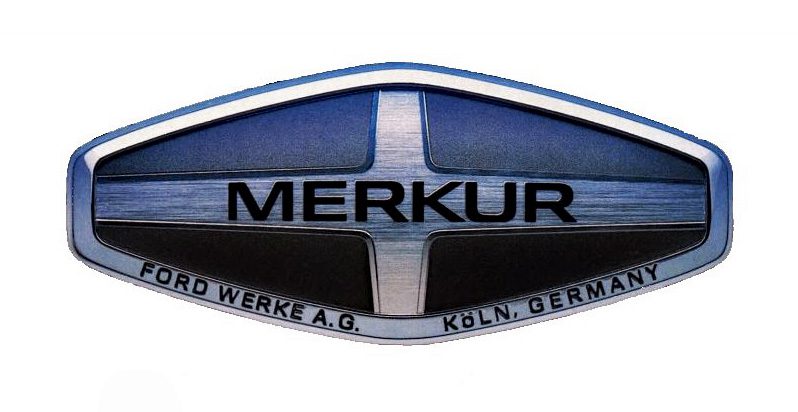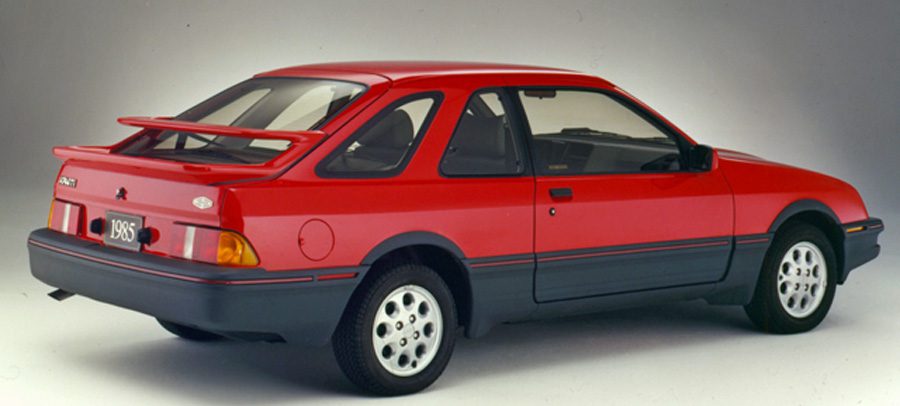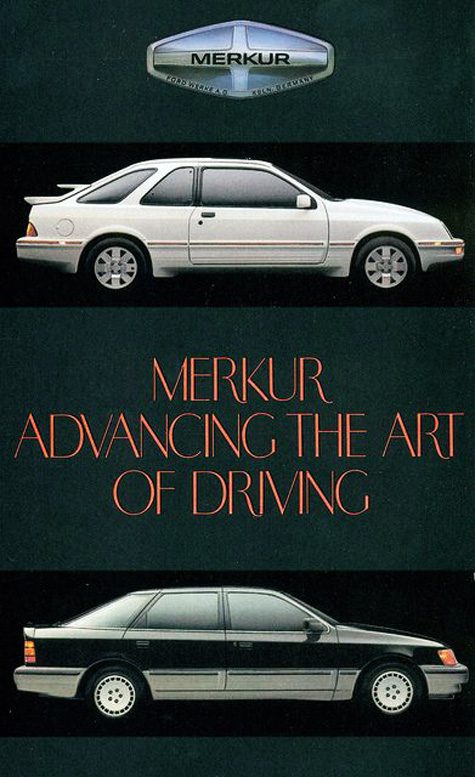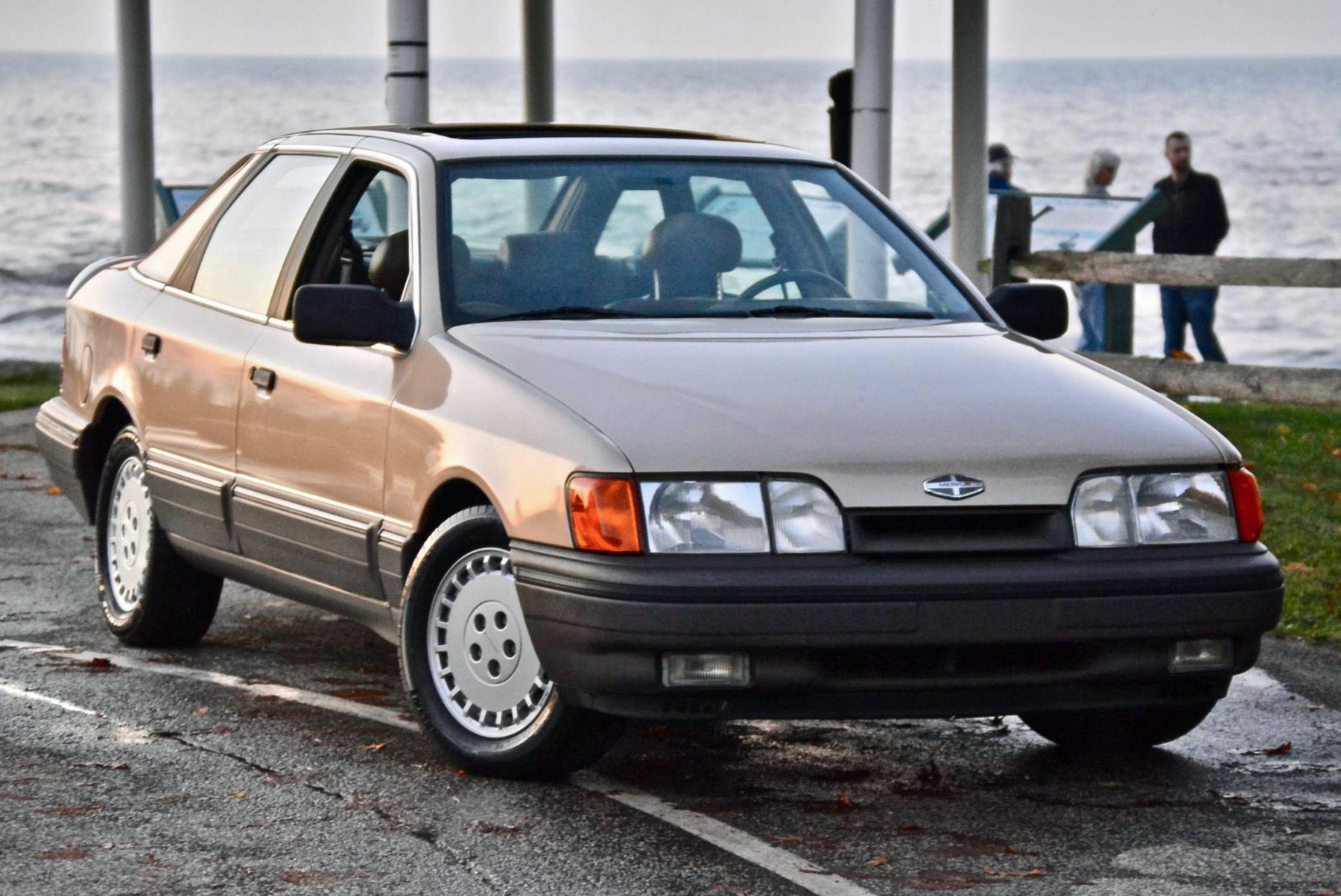
By the close of the Seventies, American motorists—at least some American motorists—had begun rejecting the version of luxury being pitched by the likes of Cadillac, and Lincoln. The large, cushy-riding, velour-lined sedans and coupes that had for decades defined the premium automotive experience, was giving way to the controlled ride, athletic handling, and minimalist interior décor of German and Swedish cars. For this we can blame Car and Driver and Road & Track. – Merkur: Forgotten Car Brands
Merkur: Forgotten Car Brands
And while big American luxury cars would continue to sell well throughout the Eighties, European automotive sensibilities would increasingly influence the design of new vehicles. Perhaps the most jarring example of this trend was the Ford Taurus.

Though the Taurus, and its Mercury clone the Sable, were not luxury vehicles per se, they cleaned up nicely, and presented as upscale in higher trim levels. More importantly, the two ultra-modern sedans rode and handled more like German and Japanese cars, and less like the Chevrolet Malibus and Ford LTDs they were replacing.

Feeling a trend at hand, Ford developed a new brand to be retailed through Lincoln-Mercury outlets called Merkur. Merkur, which is German for the Roman god Mercury, would be the first new Ford brand since Edsel—and it would cater to roughly the same demographic—though a quarter of a century later.
Instead of developing new vehicles to sell under the Merkur banner, Ford management chose instead to import cars from the maker’s German arm. Beginning in 1985, and available only through select Lincoln-Mercury locations, the Merkur brand offered American shoppers something different.
The fledgling brand launched with just a single model, the XR4Ti. A rebadged and tweaked version of the European-market Sierra, the small sport coupe certainly looked the part of a premium German sporty ride. Because General Motors already sold vehicles in the U.S. called Ciera (Oldsmobile) and Sierra (GMC), Merkur marketing types chose to just go with the alphanumeric designation, dull as it was.
Though powered by a V6 in Europe, the XR4Ti made use of the turbocharged 4-cylinder engine already employed in the engine bays of the Ford Mustang SVO, and the Thunderbird Turbo Coupe.
Mated to a 5-speed manual, the turbo mill produced 175 horsepower, but just 145 when saddled to the available 3-speed automatic transmission. Generally speaking, the motoring press found the XR4Ti to be enjoyable to drive, but its nearly $17,000 base price struck many as a bit high, especially given that the V8-powered Mustang GT still started at less than $10,000.
The XR4Ti would be the lone Merkur until 1988 when the midsize Scorpio sedan was added to the lineup. A tweaked version of a European-market Ford model of the same name, the rakish Scorpio boasted clean lines, a premium cabin, and a strong, efficient V6 engine. Mated to a 4-speed automatic, the Scorpio’s 2.9-liter V6 produced 144 horsepower, and was considered quick for the day. But, like the XR4Ti was pricey, and shoppers stayed away. The ’88 Merkur sedan started at more than $23,000, this at a time when the like-size Mercury Sable started at about $14,000, and a Lincoln Town Car around $23,000.
Due to slow sales, and because both cars would need to be reengineered to meet new, federal side-impact-protection mandates—a pricey proposition for the maker—Ford brass pulled the plug on Merkur after the 1989 model year.
Between 1985 and 1989, roughly 42,000 XR4Tis found homes, with roughly 14,000 sold in 1986, the car’s best year. Just 22,000 Scorpios were retailed in 1988 and 1989, with almost 16,000 hitting the street in 1988.
As with Edsel, pricing was a problem for Merkur, a situation exacerbated by the strength of the German mark at the time.
Merkur did survive longer than Edsel, however. Edsel’s three-year run (1959-19610) pales in comparison to Merkur’s five-year stint (1985-1989). That said, tenure isn’t everything; Edsel moved almost 120,000 units in its short time on dealer lots.
And while Ford’s European-brand experiment failed, Lincoln did begin selling smaller and sportier rides, including the redesigned 1991 Continental, and the 1998 Mark VIII. Today, Merkurs are tough to find, and the XR4Ti has a modest following as a retro-cool sporty coupe.

Listen to the Car Stuff Podcast
Merkur Pictures
Click below for enlarged images

